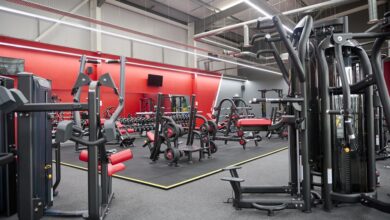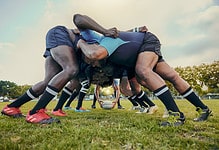
By Emma Dicks, communications director at retail marketing agency HRG
Having worked with big names such as adidas, Speedo and TaylorMade, HRG knows attitudes towards different sports vary and that it’s crucial for brands in the market to understand why this is.
How individuals decide to exercise is based on a variety of factors. Motivations, concerns, enjoyment and experiences vary wildly, but it’s possible to assess the market as a whole and spot trends in consumer attitudes. It’s therefore of paramount importance for brands to dedicate time and attention to customer insight to understand who is buying – or not buying – and why.
Communicating messages
Consumers respect brands that know who they are and who their customer is. The messages a brand needs to communicate will, therefore, differ according to the consumer.
For example, are you marketing to triathletes or casual swimmers who take a dip once a week? Perhaps your target audience is a global adventurer who loves open water swimming? The trick is to connect with what engages and motivates the consumer. But keep it authentic.
One solution brands could employ is to sign celebrity brand ambassadors who their audience can identify with. Nike, for example, sponsors pop megastar Ellie Goulding. While her musical accomplishments may seem unachievable to most, her down to earth manner and commitment to exercise allows her to be a mirror image of consumers.
However, it’s worth remembering that whatever sparks their motivation, a savvy consumer won’t buy into a campaign just because it has a big marketing budget or a beautiful spokesperson.
Similarly, though it’s tempting to expect national hype around sporting events such as the Olympics to raise awareness of a sport, brands cannot just rely on this to sell their products, as the legacy sense of well-being needs to last much longer than a season.
Micro moment marketing
Instead, brands need to take a bold approach in connecting with the shopper using relevant messaging. To make it truly customer centric, there are even ways for brands to target individuals based on their location and time of day. Take Lucozade, for example, which during the warmer months, offered discounts to shoppers close to a store selling its drinks if the temperature rose.
This micro-moment marketing approach relies on the premise that we are bombarded by content, adverts and offers 24/7. Combined with consumers spending an increasing amount of time on their smartphones and other digital devices and platforms, it’s a great opportunity for brands to offer something targeted, relevant and consistent throughout the shopper journey.
Ultimately, the messaging has to have integrity and relevance, so that people can feel a part of something bigger than simply being the owner of a product. The crux here is research.
This Girl Can
A recent national survey found 75 per cent of women want to do more exercise, but worry they will be ridiculed by those around them. The solution? Empowerment. This is exactly what the 2015 Sport England campaign This Girl Can was conceived to portray, encouraging people to move as opposed to focusing on the ideal body.
Bottling up that feel good factor isn’t easy and for This Girl Can it was important to communicate a sense of achievement, whatever the level of a person’s fitness.
Whether it’s a swimming novice who hasn’t taken a dip in a public pool for 20 years or a fledgling lake diver who has never felt the sand between their toes, the This Girl Can message is loud and clear – exercise shouldn’t be about how you look, but how you feel.
As such, the imagery in the campaign showed real people in real scenarios achieving personal goals not influenced by society’s stereotypes of body image.
Case study: Speedo
For Speedo, the challenge is different and influenced by its history. This global brand is arguably the most well known swimwear name worldwide, so it’s not a case of simply boosting awareness.
Instead, HRG looked at how swimming and exercise was positioned. We suggested that for its next campaign Speedo should align itself with consumers who, like those portrayed in This Girl Can, have overcome their fitness fears, while inspiring others to combat their own.
As well as This Girl Can, our findings were consolidated by our research into how retailers engaged consumers who might not ordinarily visit a dedicated sportswear store, but could be considering taking up swimming and purchasing the necessary kit.
We found John Lewis promoted the benefits of swimming through positive POS and using in-store mannequins in strong, powerful positions such as front crawl. These were complemented by upbeat articles in its magazine to celebrate how swimming can enhance well-being.
Through our extensive market insight that looked at brands, campaigns and retailers alike, we found feeling fit is more desirable than being skinny. Understanding this attitude is the first step in a brand aligning itself with its target consumer.
Whether the insight manifests itself in which spokesperson to use, how stores can display products or what marketing language is used, dedicating time and attention is crucial when building a brand that’s recognisable, respected and, ultimately, bought.











